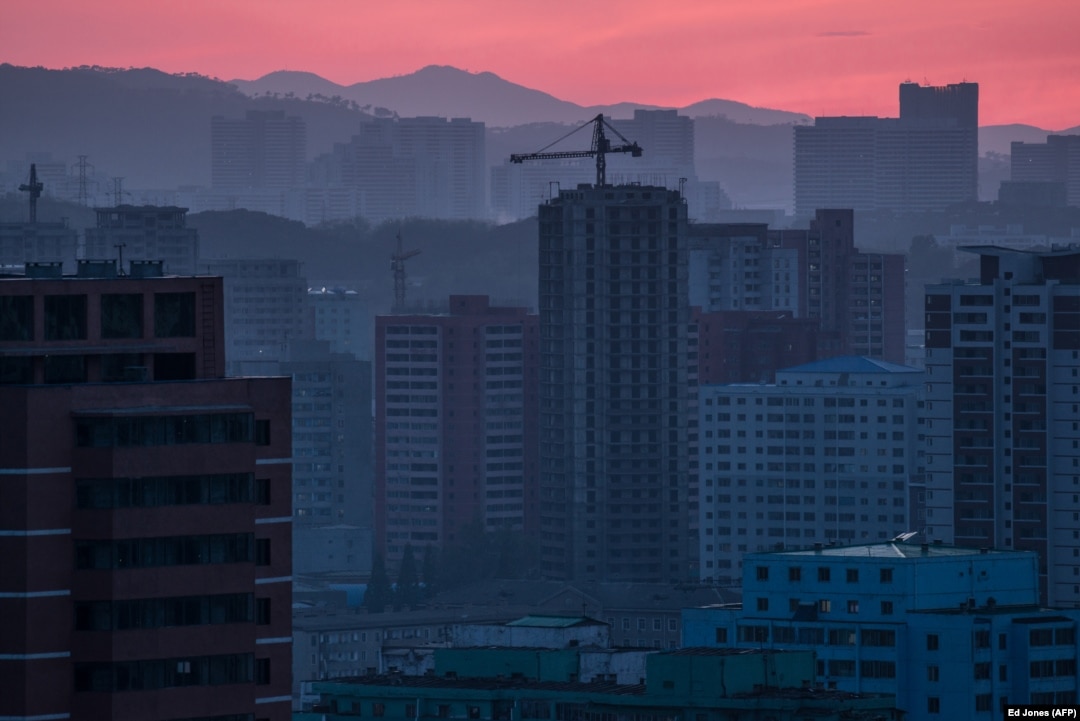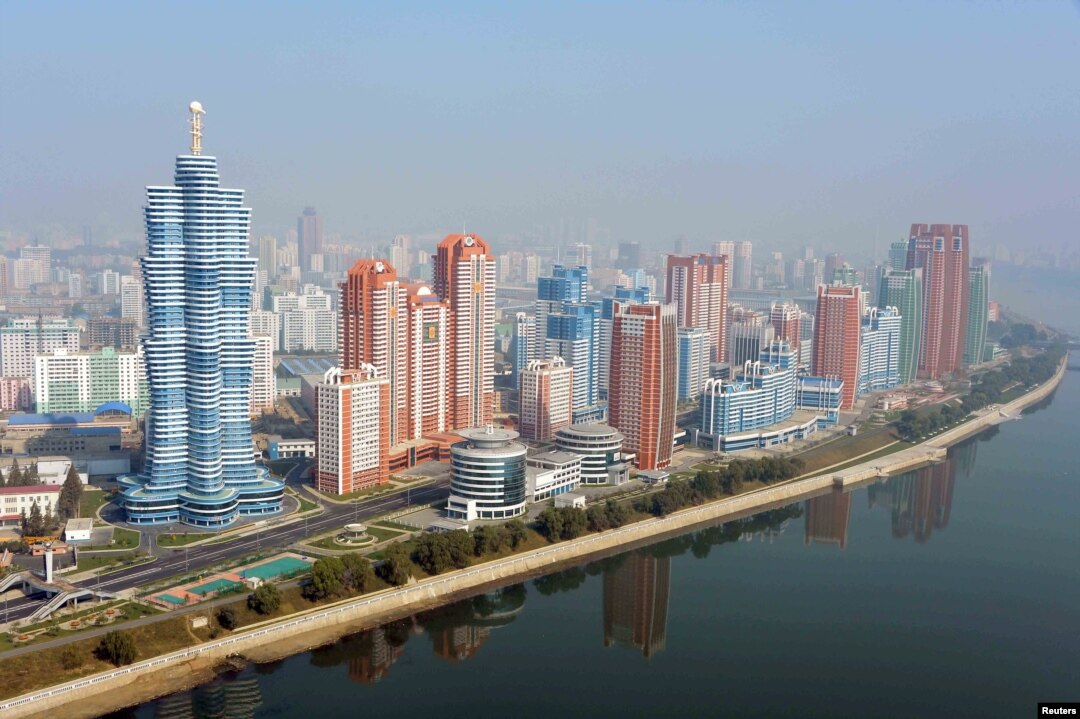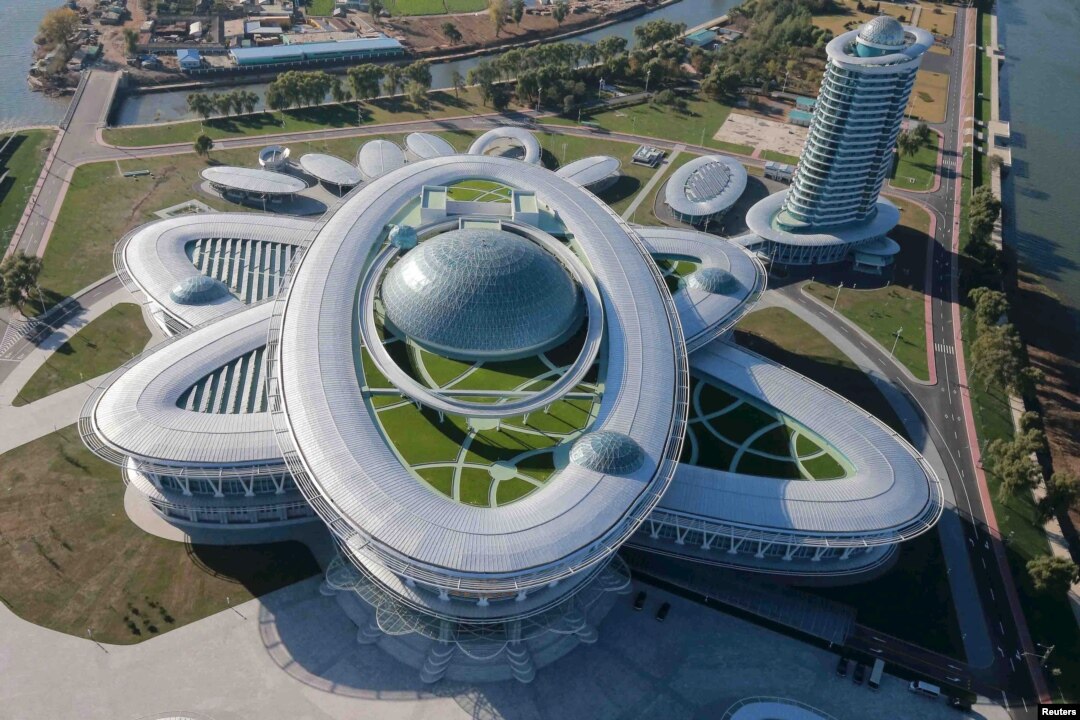Pyongyang's Building Boom

A crane tops off the Pyongyang city skyline on May 8, 2016. Construction is now a common sight in the city.

An overview of Pyongyang. North Korea spends around one-third of its national income on its military, with little left over for civilian infrastructure.

But in recent months the Pyongyang skyline has been looking rather...futuristic. This handout photo of high-rise buildings and apartment blocks was released in October 2015.

The Sci-Tech Complex in Pyongyang, completed in 2015. The atom-shaped structure is run on solar, geothermal, and "other natural energies."
A model of a rocket is the centerpiece of the Sci-Tech Complex. According to a North Korean press release the complex will serve as an e-library for work produced by the country's scientists.
In the summer of 2015, the new terminal of Pyongyang's airport was opened to much (carefully choreographed) fanfare.
Inside, the style is sleek...
...yet Soviet. Some analysts put North Korea's mini-boom down to increased trade with China, while others believe the country has been selling off its gold reserves.
Laborers at work on a construction site in central Pyongyang. As well as government spending, much of the economic activity in the capital is reportedly entrepreneurial.
Decaying apartment blocks in Pyongyang. According to a report in The Guardian, many North Koreans rely on illicit trade to feed their families.
North Korean leader Kim Jong Un, here strolling among freshly completed apartment blocks, has slipped some reforms into his nation's moribund economy.
A worker photographed during a media tour of an Electric Cable Factory. Factories in the capital which produce more than their quota can now sell the excess production, offer workers bonuses, or reinvest the money.
A guide photographed near the Electric Cable Factory in Pyongyang. There is also money to be made from state entities issuing permits for business people to operate on their behalf, often in completely unrelated industries. A state-run school factory, for example, might sell an entrepreneur the permit to open a mine.
Dancers in Pyongyang on April 11, the fourth anniversary of supreme leader Kim Jong Un's assumption of North Korea's top post.
Pyongyang remains a gloomy place by night.
But morning reveals a skyline that is changing relatively quickly.
Statues of North Korea's founder, Kim Il Sung, and his son and successor, Kim Jong Il, look over a city which is undergoing rapid physical change, but it's unlikely political change will follow any time soon.

